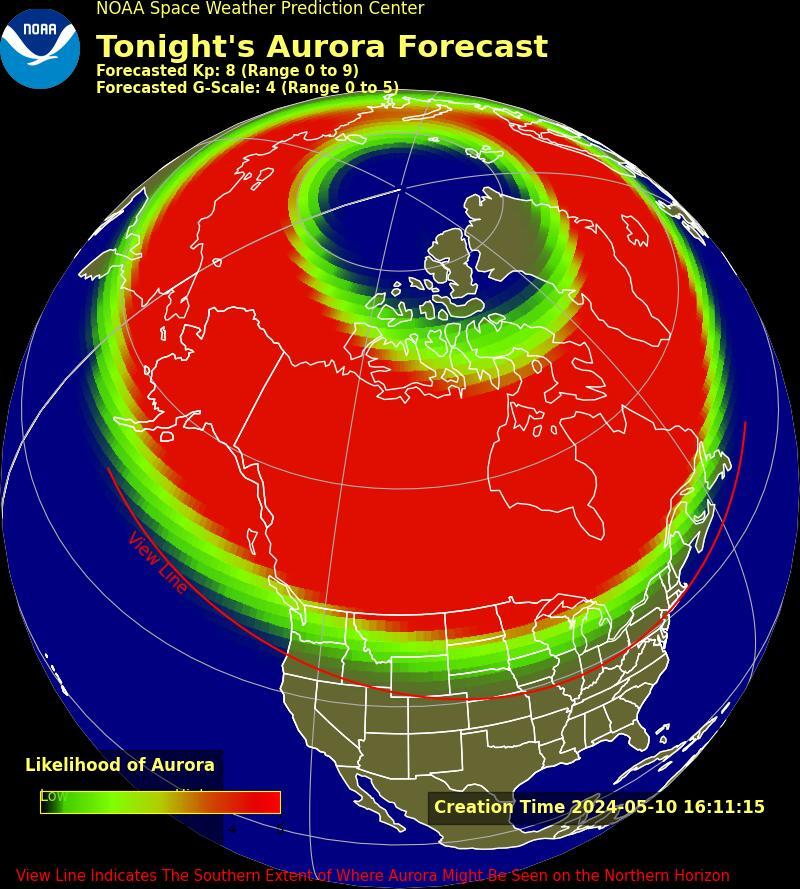SALT LAKE CITY — Set your alarms to potentially witness a beautifully painted sky from Mother Nature this weekend in northern Utah!
A geomagnetic storm watch was issued for this weekend with solar flares expected to hit Earth's magnetic field on Friday and linger into Sunday.
So, will Utah get a glimpse of the colorful purple, green and blue lights dancing in the night sky?
Maybe.


Friday night, areas of northern Utah are in the "viewing area" of the northern lights, meaning you'll have to pack the car and head to Bear Lake or even further North for the chance of a glimpse. The best time to look in Utah will be after 10 p.m.
Cloud cover is looking minimal after a week of stormy weather, which could make for the perfect viewing conditions.

However, experts predict the aurora may be visible overnight Friday into Saturday as far south as Alabama to northern California according to the National Oceanic and Atmospheric Administration's Space Weather Prediction Center, so there's still a chance.
Each day NOAA shares the Aurora Forecast for one day in advance, so click here to view the latest maps.
Auroral lights are very difficult to predict, but there's one SURE way you won't see it.
"If you want to guarantee you won't see it, don't look," exclaimed NASA Ambassador to Utah Patrick Wiggins. "Go out and look, look to the North, try to avoid any city light pollution."
Seeing the northern lights in Utah is rare, but not totally unheard of. In April 2023, Utahns got a special treat as the sky came alive with shades of purple and green. It was faint, but still captured in photos.
"On average, northern Utah gets maybe two Auroral displays a year and usually neither one of those is all that great," Wiggins explained. "If you really want to see them well, there's simply no way around it, you gotta go North."
Wiggins recommended that die-hard aurora-seekers head as far North as possible to have the best chance of seeing the spectacle.
So, what makes this weekend special? Why is there even a SLIGHT CHANCE for an aurora sighting in the Beehive State?
"The sun burps, right," Wiggins chuckled. "This happens from time to time, sometimes it's a bigger burp than other times."
This "burp" from the sun results in an eruption of solar material, with millions of tons of particles being directed to northern and southern magnetic poles.
Officials report five earth-directed coronal mass ejections were detected on the sun and will hit Earth's magnetic field from Friday through Sunday.
"If it's a really big punch, it can get further south or North depending on what part of the planet you're on," Wiggins explained. "It literally excites the atoms in the atmosphere and makes them give off light."
Officials have issued a rare geomagnetic storm watch for Saturday because of the phenomenon. The last time a watch was similarly issued was in 2005.
Even though the odds may not be totally in our favor here in Utah, if you want to try your luck, set your alarms for 1 a.m. and head out to an isolated area, away from city lights. It may be easier to see the lights with a camera over the naked eye.
Of course, if you capture any amazingly colorful views, share them with FOX 13 News by joining the "Utah's Weather Authority" Facebook group.
Happy Aurora hunting!



